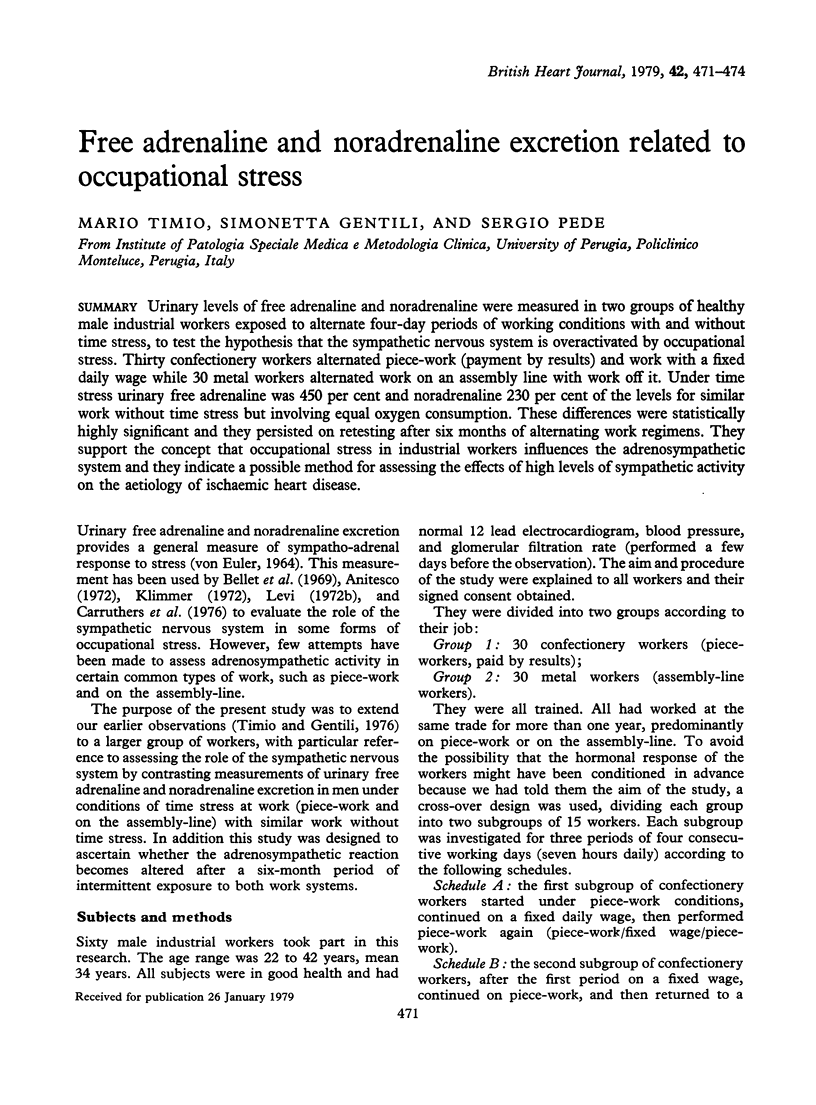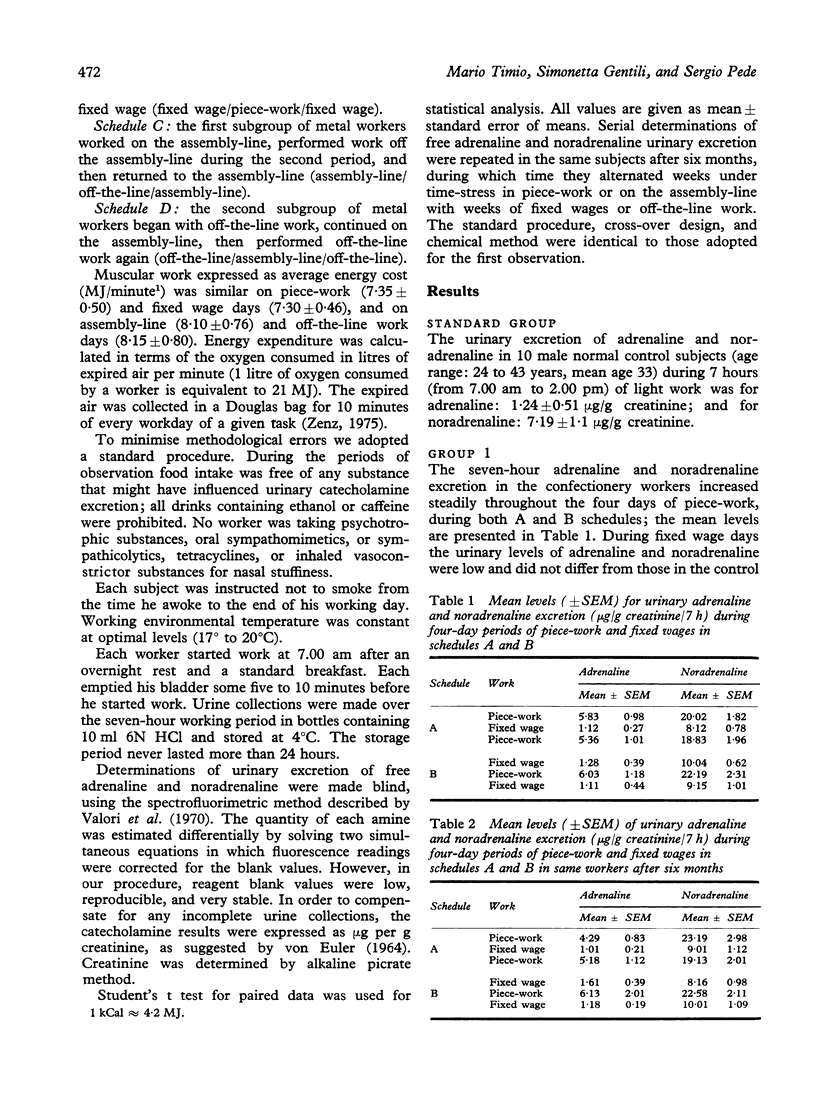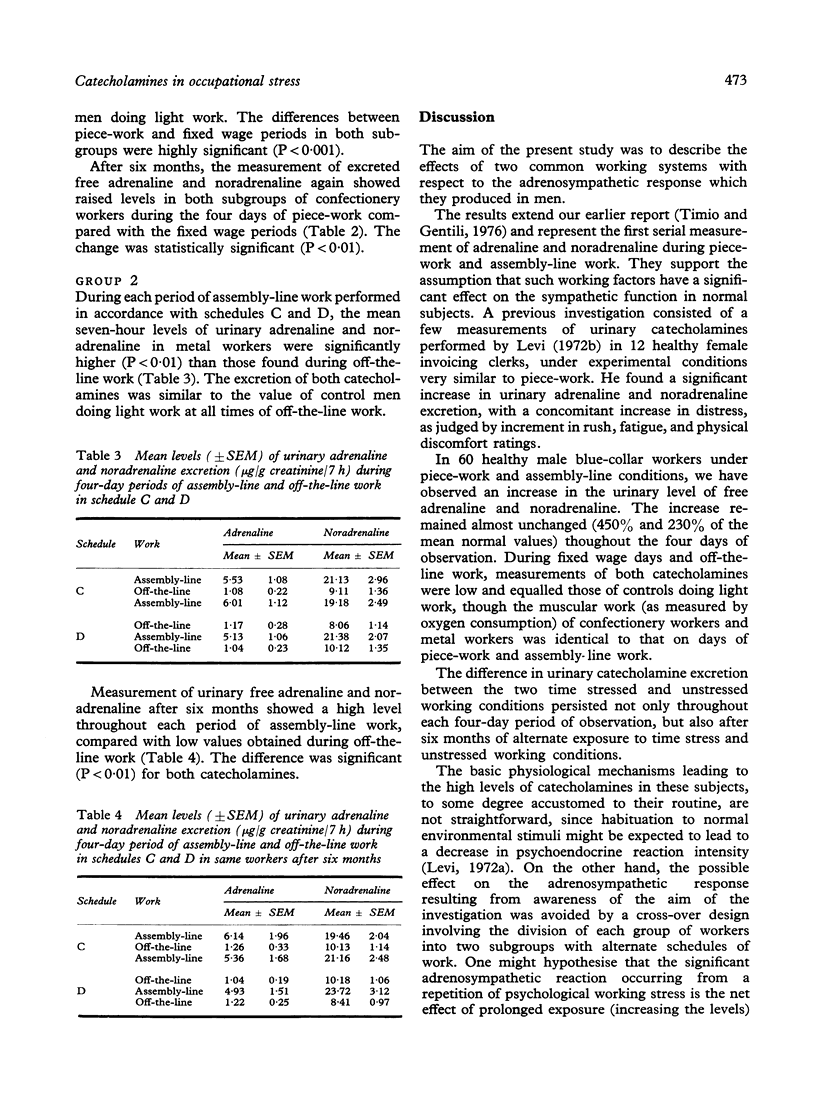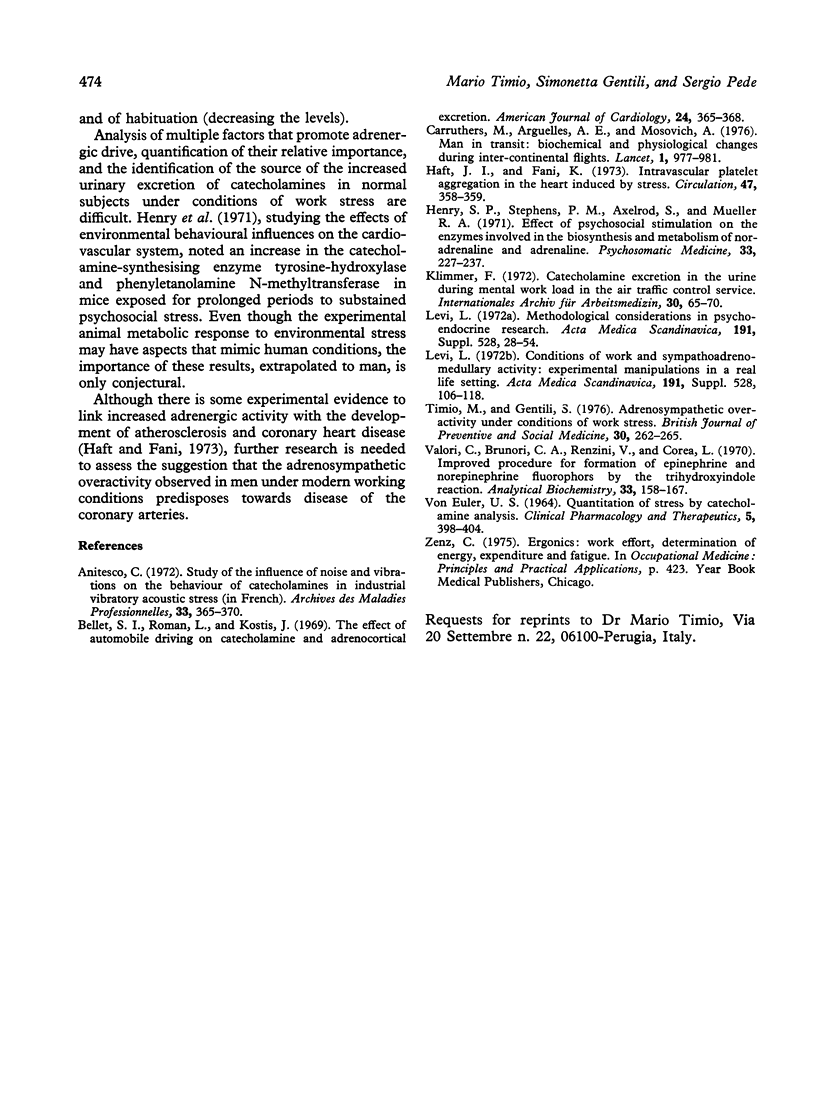Abstract
Urinary levels of free adrenaline and noradrenaline were measured in two groups of healthy male industrial workers exposed to alternate four-day periods of working conditions with and without time stress, to test the hypothesis that the sympathetic nervous system is overactivated by occupational stress. Thirty confectionary workers alternated piece-work (payment by results) and work with a fixed daily wage while 30 metal workers alternated work on an assembly line with work off it. Under time stress urinary free adrenaline was 450 per cent and noradrenaline 230 per cent of the levels for similar work without time stress but involving equal oxygen consumption. These differences were statistically highly significant and they persisted on retesting after six months of alternating work regimens. They support the concept that occupational stress in industrial workers influences the adrenosympathetic system and they indicate a possible method for assessing the effects of high levels of sympathetic activity on the aetiology of ischaemic heart disease.
Full text
PDF



Selected References
These references are in PubMed. This may not be the complete list of references from this article.
- Bellet S., Roman L., Kostis J. The effect of automobile driving on catecholamine and adrenocortical excretion. Am J Cardiol. 1969 Sep;24(3):365–368. doi: 10.1016/0002-9149(69)90430-5. [DOI] [PubMed] [Google Scholar]
- Carruthers M., Arguelles A. E., Mosovich A. Man in transit: Biochemical and physiological changes during intercontinental flights. Lancet. 1976 May 8;1(7967):977–981. doi: 10.1016/s0140-6736(76)91857-2. [DOI] [PubMed] [Google Scholar]
- Haft J. I., Fani K. Intravascular platelet aggregation in the heart induced by stress. Circulation. 1973 Feb;47(2):353–358. doi: 10.1161/01.cir.47.2.353. [DOI] [PubMed] [Google Scholar]
- Henry J. P., Stephens P. M., Axelrod J., Mueller R. A. Effect of psychosocial stimulation on the enzymes involved in the biosynthesis and metabolism of noradrenaline and adrenaline. Psychosom Med. 1971 May-Jun;33(3):227–237. doi: 10.1097/00006842-197105000-00004. [DOI] [PubMed] [Google Scholar]
- Timio M., Gentili S. Adrenosympathetic overactivity under conditions of work stress. Br J Prev Soc Med. 1976 Dec;30(4):262–265. doi: 10.1136/jech.30.4.262. [DOI] [PMC free article] [PubMed] [Google Scholar]
- VON EULERU QUANTITATION OF STRESS BY CATECHOLAMINE ANALYSIS. Clin Pharmacol Ther. 1964 Jul-Aug;5:398–404. doi: 10.1002/cpt196454398. [DOI] [PubMed] [Google Scholar]
- Valori C., Brunori C. A., Renzini V., Corea L. Improved procedure for formation of epinephrine and norepinephrine fluorophors by the trihydroxyindole reaction. Anal Biochem. 1970 Jan;33(1):158–167. doi: 10.1016/0003-2697(70)90449-5. [DOI] [PubMed] [Google Scholar]


